This week, we have a guest post from Dr. Angela Rowe – a post-doc with Colorado State University and the country of Taiwan examining radar data and monsoons. Dr. Rowe received her undergraduate degree in meteorology from Millersville University, and her Master’s and Doctoral degrees from Colorado State University, focusing on the Asian and North American Monsoons. This post is timely, as the monsoon was mentioned in many of the state of the climate of 2010 discussions for different GLOBE regions.
When most people hear the word “monsoon”, thoughts of abrupt, intense rainfall typically come to mind. Although many areas across the world do, in fact, receive the majority of annual rainfall during the monsoon, this term, derived from the Arabic word “mausim” meaning season, technically refers to a seasonal reversal in winds. During the summer months, the land surface heats up as days become longer and incoming solar radiation increases. In coastal areas, a large difference in temperature develops between the land and the nearby ocean because water has a higher specific heat capacity, meaning it takes more energy to heat up the ocean surface to the same temperature as the land. The warmer air over the land is less dense and, therefore, rises, creating low pressure near the surface with relatively higher pressure over the cooler ocean surface. This pressure difference leads to onshore winds at the surface and a return flow at upper levels (Fig. 1). This mechanism is similar to that described for sea breezes (the cooler winds you feel coming off the ocean while sitting at the beach under the sun), but occurs on a much larger scale. The surface winds bring moist air over the land surface, and if that air can be lifted, whether by being forced up along steep mountains, rising due to surface heating/convection, or from surface convergence (perhaps due to colliding of these onshore winds with downslope winds off mountain ranges), clouds and subsequent rain will form. This is the reason that monsoons are typically associated with an increase in rainfall. In the winter, however, as the land cools off quicker than the nearby ocean, a reverse circulation develops (Fig. 1), resulting in offshore flow and a shift to drier conditions over the land areas.
The most well-known monsoon occurs in Asia, where the high elevations of the Tibetan Plateau, extending, on average, over 5000 m in height above sea level (Fig. 2), enhance the temperature difference between land and water. The Asian monsoon influences a large percentage of Asia (Fig. 3), but varies regionally, and is, therefore, commonly described as two separate, but interacting, sub-systems: the Indian Summer Monsoon (or South Asian Monsoon) and the East Asian Monsoon. The first area to receive monsoon rainfall in India is the Western Ghats, where this large mountain range, located along the southwestern coast of the country (Fig. 2), acts as a barrier to the moist winds from the Arabian Sea. The incoming flow is forced up along the western slopes, referred to as orographic lift (Fig. 4), leading to enhanced precipitation as water vapor condenses to form rain-producing clouds along these steep mountains. On the leeward (eastward) side of the mountains, downslope winds lead to relatively drier conditions, referred to as a “rain shadow” (Fig. 4). This distribution of rainfall can be seen in Fig. 5, where over 250 cm of rainfall is observed annually along the southwestern coast. The other region in India characterized by these large amounts of rain is located to the NE along the Himalayas. As moist air is brought in from the Bay of Bengal, the highest mountain range in the world lifts this air, similar to the Western Ghats, and results in the wettest places on Earth. One of these towns, Cherrapunji, holds the Guinness World Record for most rain in a single year (22 m/75 ft between July 1860 and August 1861) and for most rainfall in a single month (30.5 ft in July 1861). While more recent years have not seen quite these record-breaking amounts, the average yearly rainfall is typically around 12 m, with the majority falling during the summer monsoon months of June and July.
As the summer months progress, the moist, onshore winds associated with the monsoon impact nearby regions to the east over the Indo-Chinese peninsula. Along with India, most of these regions rely on the monsoon rainfall for crops; therefore, any changes in the onset and intensity of the monsoon could greatly impact agricultural production. The monsoon season this year has been particularly difficult for Thailand, with rainfall amounts around 1800 mm (28% above normal) for 1 January to 31 October (with over 200 mm of that alone in October), leading to devastating flooding (Fig. 6) and impacting nearly 25% of this year’s rice crop. Damages were estimated at 45 billion USD, making it the world’s fourth costliest disaster, and over 500 deaths were reported.
The monsoon season over East Asia is even more complex, due to more complicated distributions between land and water and more localized mountain ranges. Precipitation in this region tends to form along bands, or fronts, referred to as Mei-Yu in China and Taiwan, Baiu in Japan, and Changma in Korea. This rain belt moves northward throughout late spring/early summer, beginning in the South China Sea in May. Large rain-producing weather systems form along this front, leading to heavy rainfall, influenced by the mountains in these regions due to orographic lift. These monsoon conditions also increase the probability of tropical storm formation, which, at times, can interact with the monsoon flow with devastating results. One such example occurred during the monsoon season in 2009 in Taiwan, when Typhoon Morakot, combined with the moist, monsoon flow, produced record-breaking rainfall with 72-hour rain totals exceeding 3000 mm and lead to landslides (Fig. 7) and hundreds of deaths.
As the onshore winds associated with the Asian summer monsoon switch to offshore, due to the cooling of the land surface, the Australian monsoon, the seasonal opposite of the Asian monsoon, begins to take effect. The monsoon rainfall begins over Malaysia during late August, moving over northern Australia by early February as this region begins to heat up relative to the nearby ocean and winds shift to onshore (Fig. 8). This region usually experiences several monsoon events, or “bursts,” over the next few months, with periods of intense rainfall that contributes more than three-quarters of the annual rainfall in this region.
Although the monsoon systems in the eastern hemisphere are the most well-known and intense, the Americas also experience a seasonal shift in winds that lead to enhanced precipitation along coastal regions. More specifically, the North American monsoon develops in northwestern Mexico and the southwestern U.S. as the elevated deserts become warmer relative to the nearby Gulf of California. A corresponding wind shift occurs during late June, leading to moist, onshore flow that is lifted by the steep mountains in this region (Fig. 9). This rainfall leads to a drastic change in vegetation in northwestern Mexico can be observed in only a couple of weeks (Fig. 10) and accounts for the majority of annual rainfall throughout most of this region. In the desert southwest of the U.S., flash floods are a major hazard resulting from this short-lived, yet intense rainfall.
Whether in the desert cities of the southwestern U.S. or the small villages along the Himalayas, rainfall associated with monsoon systems have a major impact on those living in these regions. This water is crucial for an otherwise dry area, accounting for the majority of annual rainfall and therefore required for drinking, growing food, etc. However, as was clearly displayed this year in Thailand, too much rain during the monsoon season can lead to devastation and loss of life, emphasizing the need to improve prediction of the timing and intensity of the monsoon systems across the world.
As a GLOBE school in one of these regions, have you experienced the monsoon? We’d love to hear about it! Leave us a comment or share your story through email at science (at) globe (dot) gov.

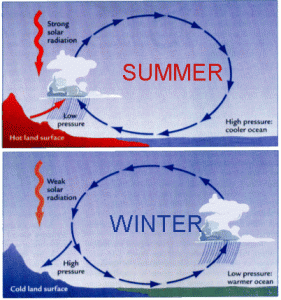
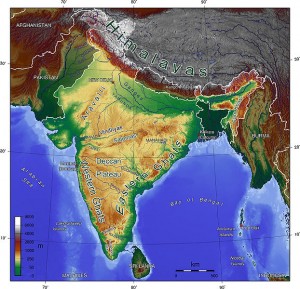
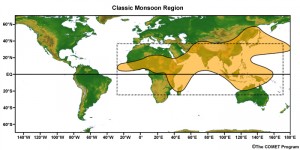
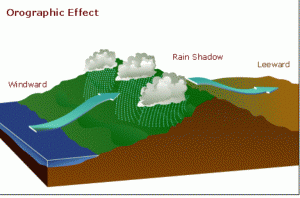
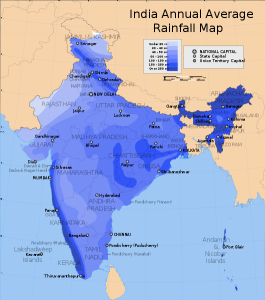

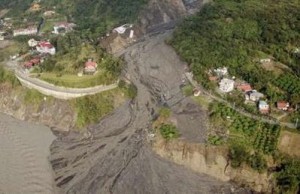
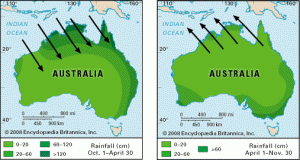
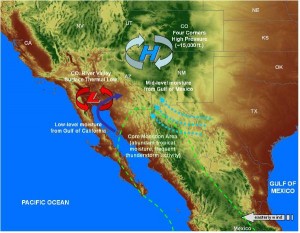

http://blog.globe.gov/sciblog/2011/12/21/what-exactly-is-the-monsoon/
Thanks, I had more knowledge of the monsoon
Thanks alot. Now I knew benefits of monsoon. Mosoon make natural be fresh.
thank you for shared
thank you for shared
thanks you for sharing.I very like
thank you for shared
Thanks U!
Thanks alot. Now I knew benefits of monsoon.
thanks you for sharing.I very like
The monsoon season this year has been particularly difficult for Thailand, with rainfall amounts around 1800 mm (28% above normal) for 1 January to 31 October (with over 200 mm of that alone in October), leading to devastating flooding (Fig. 6) and impacting nearly 25% of this year’s rice crop….. good place !
In this situation a lot more rain in Vietnam, due to weather changes so much over the years, so monsoon factor
In this situation a lot more rain in Vietnam,
Whether in the desert cities of the southwestern U.S. or the small villages along the Himalayas, rainfall associated with monsoon systems have a major impact on those living in these regions.
In this situation a lot more rain in Vietnam,
In this situation a lot more rain in Vietnam,
In this situation a lot more rain in Vietnam, due to weather changes so much over the years, so monsoon factor
A monsoon is a seasonal shift in the prevailing wind direction, that usually brings with it a different kind of weather.
thanks, it cool
Thanks alot. Now I knew benefits of monsoon. Mosoon make natural be fresh.
Whether in the desert cities of the southwestern U.S. or the small villages along the Himalayas, rainfall associated with monsoon systems have a major impact on those living in these regions.
Hi. Thanks for share. Content very good
wow, thank you for this, it’s really helpful for me
thanks for sahre
Nice post. I was checking constantly this blog and I’m impressed! Extremely useful information specially the last part I care for such info a lot. I was seeking this certain information for a long time. Thank you and best of luck.
I care for such info a lot. I was seeking this certain information for a long time. Thank you and best of luck.
I really like it when people get together and share views. Great website, keep it up!